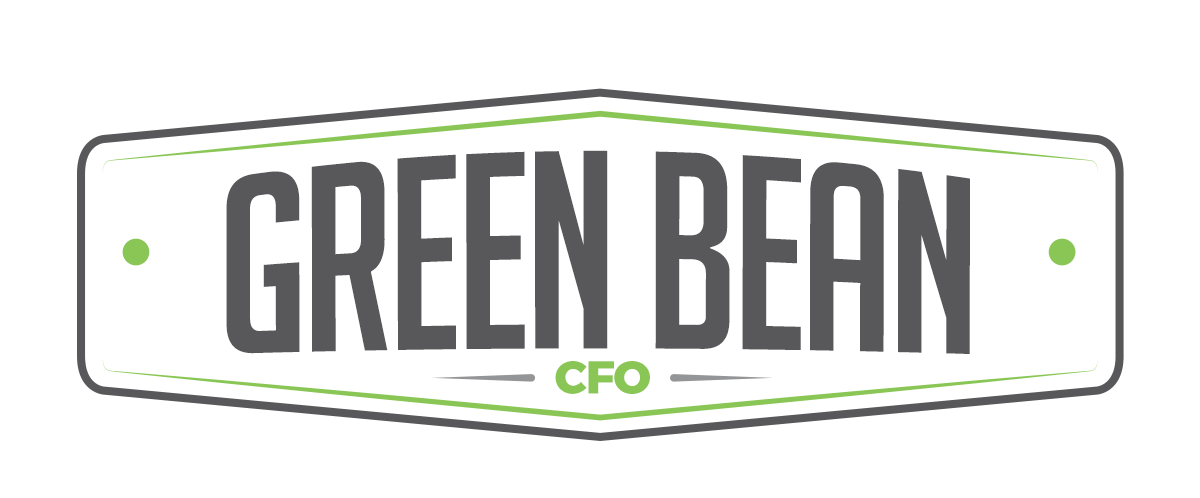Do You Speak Cannabis Business Lingo?

This post lays out the blueprint for minimizing the taxes your cannabis business will pay under § 280E. Less tax is more cash!
“Cost Accounting is enemy number one of productivity.” – Eliyahu Goldratt
Yep, the above is a quote from an Israeli business guru.
The bad news is that – and all of the terms below are tied to this concept – to get the most after-tax profit out of your cannabis touching businesses you’ve got to do accrual/ cost accounting and capitalize your expenses per the IRS rules for inventories to be able to get the equivalent of tax deductions for your Cost of Goods Sold (COGS) upon the sale of your marijuana products. You will also want to issue your financial statements in accordance with GAAP (absolutely required to maximize tax deductions if you’re a manufacturer/ producer).
Scratching your head yet?
The good news is that we are going to tell you what these terms mean so you can decide whether or not your Cannabis CPA/ Accountant/ Bookkeeper is applying them properly to ensure you get the most after-tax profit legally possible from your cannabis company.
More good news – if it’s not looking too good, you can always hire someone else to do this tedious, painstaking work (like Green Bean CFO)!
Let’s highlight some key terms and concepts that you should be familiar with and tell you why they matter. We will include terms and concepts which are interrelated for the purposes of cannabis accounting. We aren’t trying to familiarize you with all of the jargon of a CPA, and to 99% of CPAs, these terms and concepts are not the most pertinent to the clients they serve. We are only concerned with those terms most relevant to your role as an executive in your cannabis business. Oh yeah, if you’re wondering what the squiggly “§” line means, quickly skip to the last paragraph to see how different parts of the tax laws/ regulations interplay here.
§ 280E – Congress passed a law in 1982 disallowing all tax deductions for those trafficking in a Schedule I (cannabis) or II drug. The good news is that the 16th Amendment of the Constitution left us leeway to reduce the amount of income we pay tax on by the COGS (defined below).
Cannabis Touching – “Cannabis touching” is the term we use for businesses that dispense, manufacture, cultivate, or otherwise physically touch cannabis in its Schedule I drug form (as defined by the DEA). Cannabis touching businesses that sell (aka traffic) their cannabis-derived products are subject to § 280E (as opposed to a testing laboratory that does not sell/ manufacture/ cultivate cannabis and may not be subject to § 280E).
Cost Accounting – In the cannabis space, cost accounting is the mechanism we must use to allocate costs into inventory, so when the inventory is sold, we can get the equivalent of a tax deduction or “write-off” for COGS (Cost of Goods Sold). Cost accounting is a detailed method for reporting the cost of manufacturing goods and performing services in the aggregate. Properly capitalizing costs to inventory via the regulations of § 471 is the way you minimize your taxes under § 280E.
Capitalization – Capitalization means to account for the costs that go into the purchase or manufacturing of your cannabis products by tying them to your physical cannabis inventory so that you can expense the costs of that inventory only when it is sold.
COGS (Cost of Goods Sold) – COGS is the capital that you put into the products that you sell; it’s most of the direct and indirect costs to manufacture, cultivate, or acquire cannabis ready to sell in the dispensary. Since Congress cannot tax the return of your capital to you, COGS is your only effective deduction (§ 280E disallows all deductions).
Method of Accounting – There are little checkboxes on the various types of IRS business tax return forms where you can check off either “cash”, “accrual” or “other (specify)”. Be aware that the significance of the checkmark here is much larger than the boxes themselves!
Cash Method – Your business deducts its expenses in the year you pay them and records revenue on the books when the cash is credited to your account or made available to you without restriction. If you pay expenses in advance for the year, such as a 1-year insurance premium, that is still acceptable under the cash method of accounting according to the 12-month rule. Beyond 12 months, you must accrue the expense.
Accrual Method – Under an accrual method of accounting, you generally report income in the year it is earned and deduct or capitalize expenses in the year incurred. The purpose of an accrual method of accounting is to match income and expenses in the correct year.
Hybrid Method (aka “other”) – As you may guess, this is a combination of the above methods of accounting and may entail other special methods in combination if they clearly reflect income, are done consistently, and aren’t subject to certain restrictions.
The general rule is that “taxable income shall be computed under the method of accounting on the basis of which the taxpayer regularly computes his income in keeping his books”. Of course, the tax code throws curveballs such as exceptions to the general rules and gives us specific limitations on when the cash method can be used. In addition to this, the code provides that the IRS gets to ultimately decide which method clearly reflects income.
Two factors will almost always point us toward the accrual method of accounting:
- Due to § 280E, which allows us to only recognize the Cost of Goods Sold upon the actual sale of the cannabis product, and in order to clearly reflect income in this manner, you would have to accrue your expenses and match them to your sales. By “match”, we mean at the same time.
- Generally, when inventories are necessary, and the purchase or sale of merchandise is an income-producing factor, you are required to follow Reg. § 1. 471-1 which requires the accrual method of accounting. There are exceptions to this, and particularly for qualifying small business taxpayers; however, following the rules for inventories (all the 471 stuff) is the only way to minimize your taxes under § 280E.
IMPORTANT: If you haven’t been implementing the appropriate or required method of accounting, and need to change it, you must secure permission from the IRS to do so. If you rack up penalties and fines due to changing methods without consent, you will not be forgiven by the IRS for not knowing you needed consent.
This post lays out the blueprint for minimizing the taxes your cannabis business will pay under § 280E. Less tax is more cash!
GAAP (Generally Accepted Accounting Principles) – For our purposes, cannabis producing/ manufacturing businesses that wish to minimize taxes are specifically directed by the tax code to issue financial statements in accordance with GAAP in order to allocate certain costs to COGS (those costs listed in § 1.471-11(c)(2)(iii)). GAAP is an AICPA (American Institute of Certified Public Accountants) established a set of standards, conventions, and rules that accountants follow in recording and summarizing transactions, and in preparing financial statements. Investors and state auditors may also expect or require GAAP financials as well, so dispensaries would be prudent to produce GAAP financial statements whether or not required for compliance.
Financial Statements – The primary financial reports for the purposes of a cannabis business that is not publicly traded (on a stock exchange) are the Balance Sheet, Income Statement, and Statement of Cash Flows:
A cannabis company wants to produce a balance sheet because many of the expenses captured here can be allocated to COGS to lower taxes. The Balance sheet shows a company’s financial position and is essentially a snapshot at the end of the reporting period. The businesses assets, liabilities and shareholders’ equity are broken down into their individual components, such as fixed assets (i.e. greenhouse) and long-term liabilities (loans that are to be repaid over the period of greater than one year).
“Income Statement” is interchangeable with “Profit & Loss”, and ultimately shows your net income over the accounting period. Net income is your profit, calculated as sales less COGS, selling, general & administrative expenses, operating expenses, depreciation, interest, taxes, and other expenses. You will see your allocations to COGS and how they affect your profit margins on this statement.
The Statement of Cash Flows is just that, a statement that shows how cash flowed in and out of the business, including the activities it originated from or was spent on. You will want your cannabis CPA/ CFO to project forward cash flows as well to ensure you will have enough green (not the plant) on hand to pay the bills and investors as liabilities come due.
CPA – Certified Public Accountant – It essentially takes a specific route to a master’s degree or equivalent, a brutal series of 4 exams, and some experience to become a CPA. We must comply with ethics and continuing education requirements per our state board of accountancy along with a huge set of standards provided by the AICPA.
CFO – Chief Financial Officer – The executive who directs all financial aspects of a business, including accounting functions, record keeping, designing accounting systems and procedures, financial forecasting, use of funds, etc.,
What does “§”, “IRC” and “Treasury Regulation” mean? – The “§” is just a symbol to replace the word “section”, as in section of the tax code or regulation. The Internal Revenue Service (IRS) is a division of the U.S. Department of the Treasury, so you can surmise that Treasury Regulations are simply the IRS’s interpretation of the Internal Revenue Code (IRC). The IRC is the tax code – tax laws as enacted by the United States Congress. You will be able to identify Treasury Regulations as they start with a number one and a period before the number of the tax code section that they are derived from. For example, § 1.471-1 is the Treasury Regulation (the law) derived from IRC § 471 (from the tax code). As you will see, there are several important Treasury Regulations which arose from Internal Revenue Code § 471 – General rule for inventories. Got it? With no “1.” before the number, you’re looking at the tax law that Congress came up with, a “1.” prefix simply means it’s the IRS’s rule on the tax law. It’s the IRS’s job to interpret the law, which is why we should all feel bad for them after the 2018 “Tax Reform”.
If you’re a Cannabis Entrepreneur and would like to discuss your finance/ accounting situation, don’t hesitate to reach out to us or leave a comment below.






